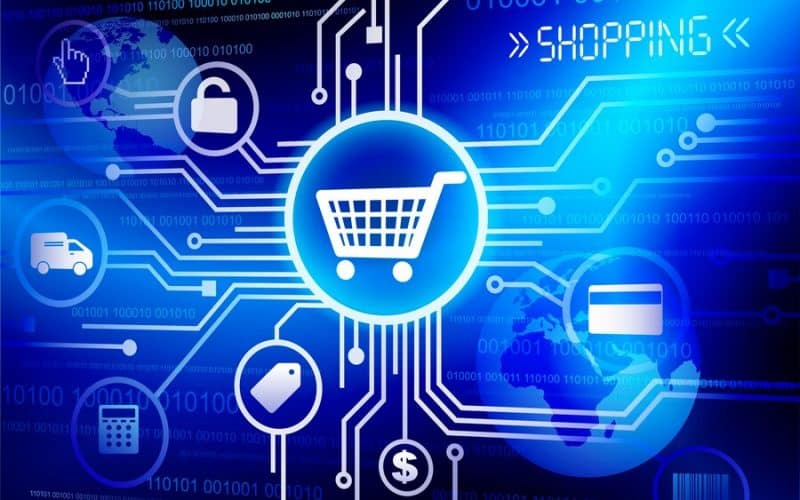I’m excited to share my knowledge with you on how marketing automation can transform your online business. With the growing competition in the e-commerce space, it’s essential to stay ahead of the game. That’s where e-commerce marketing automation comes in. It’s like having a tireless marketing assistant working behind the scenes, 24/7, ensuring your customers have a smooth and personalized shopping experience. Sounds too good to be true? Trust me, it’s not. It’s a game-changer that can help you increase efficiency, productivity, and ultimately, revenue. In this blog post, I will be opening your eyes to the benefits of ecommerce marketing automation, the best tools and platforms that can help your processes, and give you guidance on step-by-step tips for boosting your brand using Ecommerce Marketing Automation.
Key Takeaways
- Ecommerce marketing automation is a game-changer that saves time, improves efficiency, and boosts revenue. It automates repetitive marketing tasks like email campaigns and social media posting, allowing you to focus on strategic initiatives.
- Automation personalizes the customer experience, leading to increased loyalty and sales. By segmenting your audience and sending targeted messages, you can cater to their specific needs and preferences.
- Common marketing automation channels include email, mobile (SMS and push notifications), and on-site personalization. Each channel offers specific tactics to enhance the customer journey, such as automated welcome emails, abandoned cart reminders, and personalized product recommendations.
- Choosing the right marketing automation platform depends on your business needs. Popular options include Klaviyo, HubSpot, ActiveCampaign, Omnisend, and Drip. These platforms offer various features, from email marketing to CRM and sales automation.
- Start your automation journey by defining your goals, understanding your audience, and building your email list. Begin with essential automation like abandoned cart recovery and welcome emails. Track results and refine your strategy for continuous improvement.
What is Ecommerce Marketing Automation?
E-commerce marketing automation is the process of using software and technology to automate various marketing tasks and workflows. These tasks can include email marketing, social media posting, ad campaigns, customer segmentation, and more. Automation helps streamline operations, allowing you to focus on strategic decisions rather than getting bogged down by repetitive tasks.
Think of it as having a personal assistant who never sleeps, tirelessly working to ensure your marketing efforts are consistent, timely, and effective. With the right automation tools, you can create a more personalized shopping experience for your customers, which can lead to increased loyalty and higher sales.
The Benefits of Ecommerce Marketing Automation
Let’s look at some of the benefits of ecommerce marketing automation. Trust me, once you see what it can do, you’ll wonder how you ever managed without it. See infographics below:
Let me break it down a little bit:
#1. Efficiency and Time Savings
One of the most significant advantages of marketing automation is the sheer amount of time it saves. Imagine being able to set up a series of emails that are automatically sent to customers based on their behavior. Whether they’ve just signed up for your newsletter or abandoned a cart, you can create tailored messages that reach them at the right time.
#2. Improved Customer Experience
Customers today expect personalized experiences. Automation allows you to segment your audience and send targeted messages that resonate with each group. For example, you can create special promotions for loyal customers or recommend products based on previous purchases.
A client I worked with noticed a substantial increase in customer satisfaction after implementing automated personalized email campaigns. By analyzing customer behavior and preferences, they were able to send highly relevant product recommendations, which led to a 30% increase in repeat purchases.
#3. Higher Conversion Rates
Automated marketing campaigns are often more effective because they are timely and relevant. By sending the right message at the right time, you can significantly increase your conversion rates. For instance, an automated abandoned cart email can remind customers of items they left behind, prompting them to complete their purchases. According to Omnisend, companies using marketing automation have seen a 14.5% increase in sales productivity and a 12.2% reduction in marketing overhead.
#4. Scalability
As your business grows, managing all aspects manually becomes nearly impossible. Automation tools can scale your business, handling more complex workflows and larger volumes of data without breaking a sweat.
When my ecommerce store started to grow rapidly, keeping up with customer engagement was challenging. Implementing automation allowed me to maintain a high level of personalized communication with thousands of customers, something that would have been impossible to do manually.
Ecommerce Marketing Automation in Practice
Now that you understand the benefits of an ecommerce marketing automation platform, let’s look at how an automated marketing strategy works in practice.
To do this, we will divide automation approaches into channels where you can focus your efforts.
Using a platform to automate your marketing strategies allows you to create future-focused campaigns across many platforms. And each channel offers a few tried-and-true automation tactics that any firm can benefit from.
#1. Email Marketing Automation
Email has long been the king of digital marketing channels, and it shows no signs of losing its position anytime soon. Marketers choose this channel because there are so many different ways to communicate with clients via email, as well as profitable ways to automate the process.
Personalization is the most important aspect of any email marketing automation approach; when you streamline your email campaigns while catering to your specific recipients, you get the most out of your automation tools.
Start by personalizing the subject line (the most important part of your email) and the call to action. This automation alone can boost your conversion rates by 202%.
From there, you could focus on automating entire campaign workflows. Try to create automatic welcome messages and follow-ups to make sure your customers feel taken care of and appreciated when they choose to sign up for emails from your brand.
This is simply the tip of the iceberg when it comes to email marketing success, and your automation strategy is only limited by how creative you choose to be with your customer experience.
Here is a video tutorial on email marketing automation, I found it helpful.
#2. Mobile Marketing Automation
Mobile is a reality of life, and your mobile marketing automation initiatives should reflect that. Everyone’s life is linked to their phones, from mobile apps to text messaging and WhatsApp, thus every business should focus on developing a good mobile marketing strategy.
Customers perceive texting and push notifications as a valuable method to engage, whether through sales promotions, alerts, or back-and-forth interaction, and marketers can build up automated workflows to ensure that their mobile marketing efforts guide the ideal customer experience.
Marketers can use built-in application programming interfaces (APIs), customer information, and messaging tools to automate personalized and product-specific communications via MMS, SMS, and push notifications. This links customers to your business in real-time, reengages them, and takes them on the perfect customer journey.
#3. On-site Marketing Automation
Automating your marketing channels should be a primary priority, but optimizing your website is also crucial. Remember, it’s all about establishing the ideal customer journey, and 73% of customers say experience influences their purchasing decisions.
Landing pages, weblayers, and relevant content pieces can all help entice your audience to take action, and marketing automation tools can help you streamline your efforts.
Automated marketing tools enable you to make data-driven decisions about the personalized content you show to each customer. Instead of guessing which blog or product category they’d like to see next, you can automate suggestions based on their previous activities, guaranteeing that they get the experience they desire.
And that’s only the beginning. You can use marketing automation tools to improve the overall customer experience and design personalized landing pages that guide a prospect or returning client through the purchasing process.
Ecommerce Marketing Automation Platform
Choosing the right platform is crucial for successful ecommerce marketing automation. Here are some of the top platforms that offer a range of features to suit different business needs.
#1. Klaviyo
Klaviyo is renowned for its robust email marketing capabilities and seamless integration with e-commerce platforms like Shopify and WooCommerce. It offers powerful segmentation, automation workflows, and detailed analytics.
I used Klaviyo for one of my Shopify stores and was impressed by its user-friendly interface and powerful automation features. Setting up triggered email campaigns based on customer behavior was a breeze, and the detailed reports helped me fine-tune my strategies.
#2. HubSpot
HubSpot is a comprehensive marketing platform that includes tools for email marketing, social media management, and CRM. Its automation features are highly customizable, making it a great choice for businesses looking to create complex workflows.
A colleague of mine, who runs a mid-sized e-commerce business, swears by HubSpot. They use it not only for marketing automation but also for managing customer relationships and sales pipelines. The ability to have all these functions in one platform has streamlined their operations significantly.
#3. ActiveCampaign
ActiveCampaign offers advanced automation features that go beyond email marketing. It includes CRM, sales automation, and messaging tools, making it a versatile choice for growing e-commerce businesses. ActiveCampaign users report a 30% increase in engagement rates and a 28% increase in sales on average.
#4. Omnisend
Omnisend is designed specifically for e-commerce and offers a variety of tools for email, SMS, and push notification marketing. Its automation features are tailored to e-commerce needs, with pre-built workflows for cart abandonment, product recommendations, and more.
I recommended Omnisend to a friend who was struggling with cart abandonment issues. After setting up automated cart recovery emails, they saw a 20% increase in recovered sales within the first month.
#5. Drip
Drip is a powerful marketing automation platform that focuses on personalized customer engagement. It offers deep integration with e-commerce platforms and advanced segmentation features, making it ideal for businesses looking to build strong relationships with their customers.
Using Drip for your email campaigns allows you to create highly personalized messages that will resonate with different customer segments. The platform’s analytics provide valuable insights into customer behavior, which can help you refine your strategies.
Examples of Effective Ecommerce Marketing Automation Campaigns
There is so much potential in how and when you utilize ecommerce marketing automation platform that you can use it for almost every component of your marketing plan.
Here are a few examples of where you might first consider using technology, and then you can get creative with your own ideas depending on your own business needs.
#1. Email Welcome Series
An automated welcome series is a set of emails that are prompted by a client activity that indicates interest in your organization (for example, account creation, list subscription, or event registration).
These email campaigns should normally explain what your company or brand is about to a new user, and personalizing your series will keep your audience coming back for more.
#2. Birthday Offers
Gifts are one of the most enjoyable aspects of birthdays, and your customers will appreciate you wishing them well with an automated birthday message.
You can quickly create an automatic workflow to contact your clients on their birthdays, name days, or other important occasions and congratulate them or send them a gift such as a voucher or special offer.
To do this, you must first acquire the necessary calendar data. Then you must design a scenario and triggers that will deliver messages to the appropriate persons on the specified day.
Whether you use a weblayer, email marketing, SMS, or push notifications, a birthday offer can be an excellent way to delight your customers and keep them engaged with your brand.
#3. Abandoned Cart Campaigns
Abandoned carts are one of the most serious issues confronting e-commerce firms today. Nearly 70% of online shopping carts are abandoned, costing the average e-commerce business more than 75% of its online revenues.
Fortunately, abandoned cart email open rates have remained around 43% since 2016, making them one of the most reliable tools in a marketer’s inventory.
That is why it is in your best interest to set up abandoned cart campaigns that automatically send emails to clients who leave your site without purchasing the products they added to their cart. That reminder might just be the nudge they needed to click the buy button.
Ecommerce Marketing Automation Tools
In addition to the platforms mentioned above, there are specific tools that can enhance your e-commerce marketing automation efforts. Here are five of the best:
#1. Mailchimp
Mailchimp is a popular choice for businesses of all sizes. It offers a range of automation features, including email marketing, social media ads, and customer segmentation. Its user-friendly interface and extensive integrations make it a versatile tool.
One of my clients used Mailchimp to automate their email campaigns. By segmenting their audience and sending targeted emails, they saw a 25% increase in open rates and a 15% boost in sales.
#2. Hootsuite
Hootsuite is a social media management tool that allows you to schedule posts, track performance, and engage with your audience across multiple platforms. Its automation features can save you time and help maintain a consistent social media presence.
#3. Zapier
Zapier connects different apps and automates workflows between them. For example, you can set up a Zap to automatically add new customers from your e-commerce platform to your email marketing list. Businesses using Zapier save an average of 20 hours per week by automating repetitive tasks.
#4. Canva
Canva is a design tool that allows you to create stunning visuals for your marketing campaigns. Its templates and easy-to-use interface make it accessible for users without design experience.
I used Canva to create eye-catching graphics for my campaigns and social media posts. The professional-looking designs helped increase engagement and attract new customers.
This is a video on how to use Canva effectively
#5. Google Analytics
Google Analytics is essential for tracking and analyzing your website traffic. It provides insights into user behavior, helping you understand what’s working and what needs improvement.
Using Google Analytics, I discovered that a significant portion of my traffic was coming from mobile devices. This insight led me to optimize my website for mobile users, resulting in a 10% increase in conversion rates.
How to Boost Your Brand Using Ecommerce Marketing Automation
Now that we’ve covered the tools and platforms, let’s talk about how you can use e-commerce marketing automation to boost your brand. Here are some actionable steps to get you started:
- Define Your Goals: What do you hope to achieve with automation? Do you want to increase sales, improve customer engagement, or boost brand awareness? Having clear goals will help you tailor your automation strategy and measure its success.
- Know Your Audience: Take time to understand your ideal customer. What are their needs, preferences, and pain points? The better you understand them, the more effectively you can personalize your automated messages.
- Build Your Email List: Your email list is the foundation of your automation strategy. Offer incentives like discounts or free downloads to encourage customers to sign up.
- Start Simple: Don’t overwhelm yourself by trying to automate everything at once. Begin with a few essential automations, like abandoned cart recovery and welcome emails. As you gain confidence, you can add more complexity to your strategy.
- Track Your Results: Data is your friend! Use analytics tools to track the performance of your automated campaigns. Monitor metrics like open rates, click-through rates, and conversion rates. This data will help you identify what’s working and what needs improvement.
I’ve created a limited-time FREE E-commerce Marketing Automation Checklist packed with valuable resources exclusive to my readers! This checklist is your key to unlocking the secrets of successful marketing automation and taking your online business to the next level. Don’t miss out on this valuable resource, download your checklist now!
Conclusion
E-commerce marketing automation is a powerful tool that can revolutionize your online business. With the right platform, tools, and strategies, you can increase efficiency, improve customer experience, and drive revenue.
Whether you’re just starting or looking to scale your business, implementing marketing automation can help you achieve your goals more efficiently and effectively. So, what are you waiting for? Take the leap and automate your way to e-commerce success!
A quick question for you my reader: what steps are you taking to incorporate marketing automation into your ecommerce strategy?
By reflecting on this question, you can start to identify areas where automation can significantly impact your business.
Related Articles
- 15 Free Digital Marketing Resources and Tools I Recommend in 2024
- How to Write a Marketing Email: A Step-by-Step Guide for 2024
- Influencer Marketing KPIs: Best Practices and Tools to Measure Campaigns
- Top 4 Flywheel Marketing Strategies You Need to Know Now
- Brand Marketing vs. Content Marketing: How They Differ and Work Together






